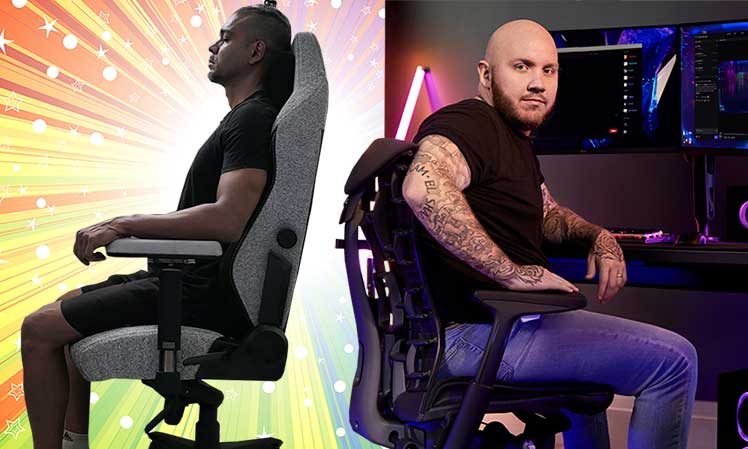
What’s the difference between a gaming chair and an ergonomic office chair? The former has a full-back design with deep recline functionality. That provides the option to kick back and relax. Ergonomic office chairs are the opposite: mid-back designs with limited recline ranges. These keep users sitting in crisp upright postures all day long. Both are legit. But which is better for your computing needs? This gaming chair vs ergonomic office chair comparison will help you to find out!
Herman Miller leads MillerKnoll, the world’s largest office furniture megacorporation. Since 1994, the company has insisted that its mid-back ergonomic chairs — used without headrests — provide the best posture support.
Meanwhile, the first full-back gaming chair emerged in 2006. Like Herman Miller chairs, these provide fully-ergonomic functionally. In all cases, that means adjustable lumbar and armrests plus a reclining backrest.
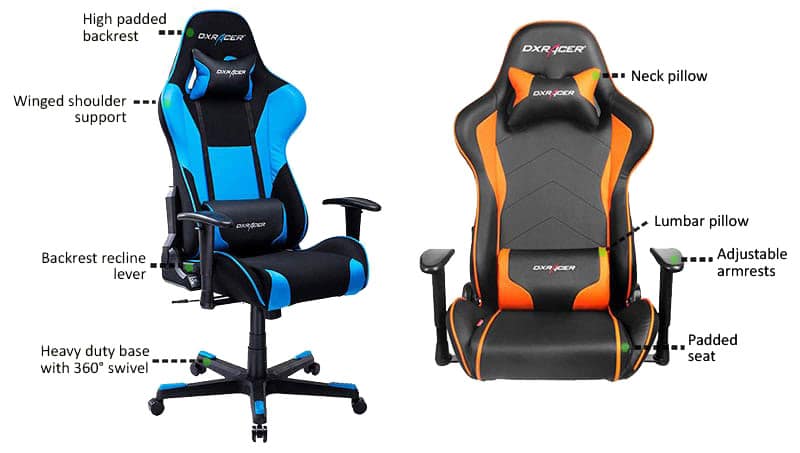
The difference: full-back gaming chairs have deep recline functionality; mid-back versions have limited recline ranges. The former provides versatile all-day sitting support. The latter keeps you locked into focus mode, making it a perfect fit in tense office settings.
This video explains the usability — and psychological — differences between the two types:
Ergonomic Criteria For Healthy Sitting
There’s no universal definition of what ‘ergonomic’ actually means. Even so, OSHA, BIFMA, the Human Factors & Ergonomics Handbook, and other leading institutions define it the same way.

To qualify as ‘ergonomic’, a chair needs three adjustable features. Adjustable lumbar support aligns the spine. Adjustable arms provide extra bracing to hold the spine upright. A reclining backrest helps a seated body move.
Combined, these features support users into dynamic neutral postures. These align the spine as if it was in a healthy standing position.
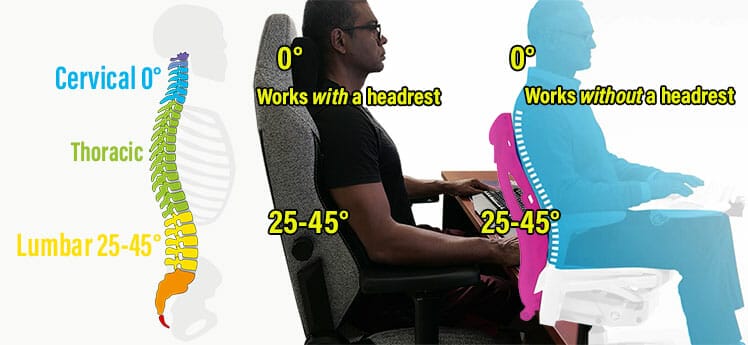
A standard neutral posture requires a 25-45° lower back curve. A perfect neutral posture also includes a 0° neck tilt.
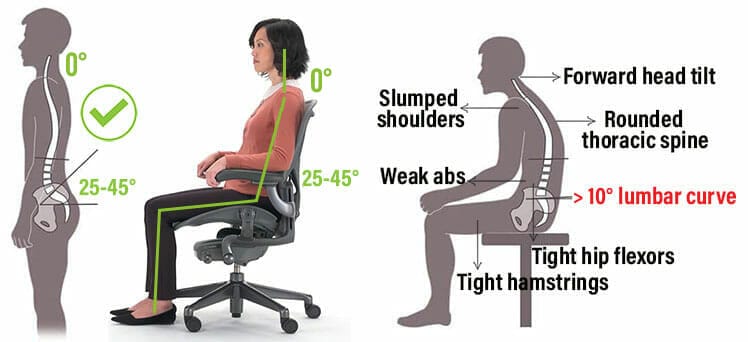
Sitting in a chair without these features first causes problems in the lower back. Without lumbar support, a seated lower back curve flattens by half.
Mid Vs Full-Back Ergonomic Differences
Mid-back ergonomic chairs are designed to keep the head balanced with a 0° tilt atop the shoulders. Using a headrest isn’t necessary. In fact, adding one ruins a healthy 0° tilt while destabilizing the neck.
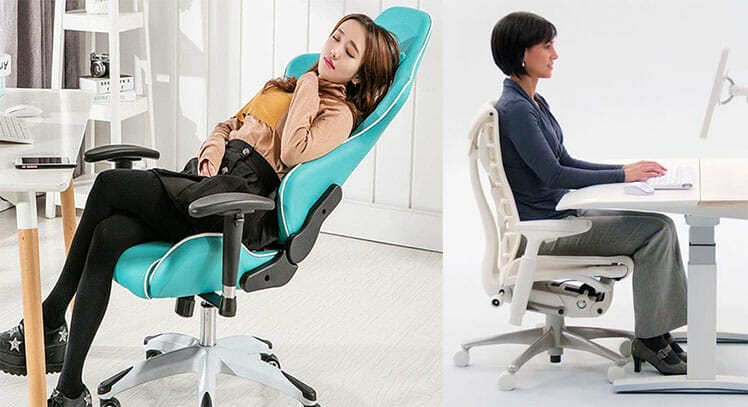
In contrast, most full-back gaming chair headrests support a slightly tilted neck. They also support freestyle postures without restriction. This provides a greater sense of psychological comfort — albeit with a loss of postural integrity.
Even so, many leading pro esports doctors insist you don’t need to sit with perfect posture! Instead, fairly good postures + frequent breaks + regular exercise boosts wellness and computing performance!
- Mid-back ergonomic office chairs: strict upright posture support; better postural integrity.
- Full-back gaming chair: supports upright and relaxed postures. Worse postural integrity but better psychological comfort.
- Long-term outcomes: undisciplined sitting degrades good posture habits.
- What do pros use? Many start on gaming chairs; later in their careers, they switch.
- Wild card: esports doctors prioritize exercise and a balanced lifestyle over chair ergonomics.
Mid-back Chair = Better Posture Support
Many people regard Herman Miller’s ergonomic office chairs as the world’s best. Notably, all models provide mid-back support with no headrest. The company’s Twitter(2) notes “you don’t need a headrest when you’re standing…”
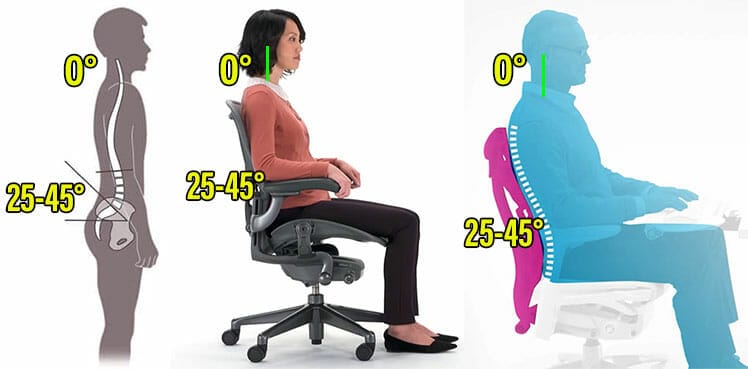
Its Aeron Gaming Chair Q+A page adds more detail: “Leaning your head back on a headrest while in an upright position would be improper posture.
We do not have headrest attachment options or recommend the use of third-party headrests. Our ergonomic chairs are designed to support your spine as if you were standing.”
A Headrest Distorts Mid-Back Posture Support
Ergonomic science supports Herman Miller’s assertion. A human spine has cervical, thoracic, and lumbar sections. A University of Michigan study(3) tested how these are affected in mid-back car seats — with and without headrests.
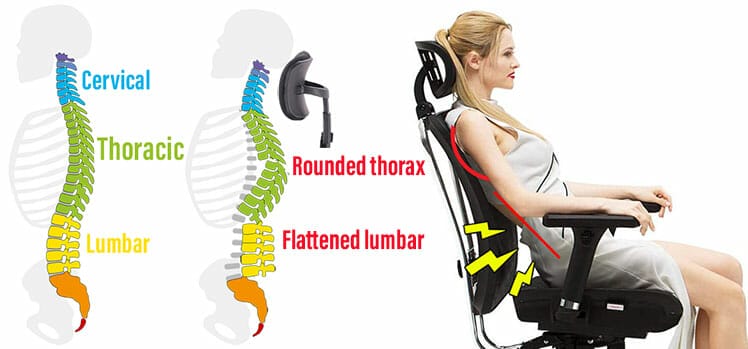
It found that a headrest compels the thoracic spine to rotate rearward. That, as a result, flattens a healthy lumbar curve.
Without lumbar support, an extended thorax reduces the lower back curve by 6.6°. In a mid-back chair + headrest with a 30° recline, the lumbar curve narrows by 17°.
These misalignments occur because most mid-back chair headrests — like mid-back car seat ones — fail to keep the head on the centerline. Without a perfect fit, mid-back headrests tilt the neck to the rear. That forces an outward curving of the thoracic spine.
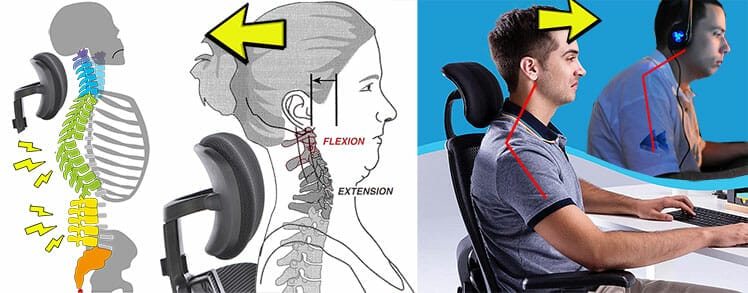
That increases the risk of musculoskeletal disorders. Adding lumbar support protects the lower back, but the thorax remains misaligned.
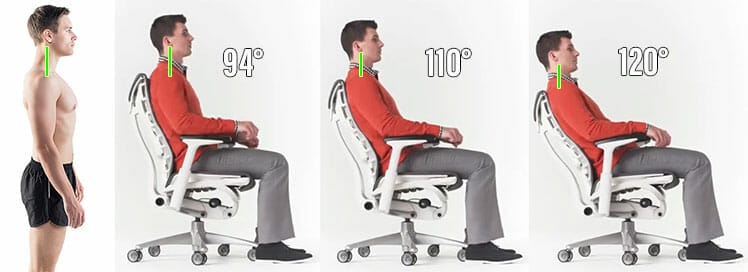
This is why Herman Miller asserts that using a headrest with a mid-back ergonomic chair causes improper posture. Learn more:




No comments :
Post a Comment